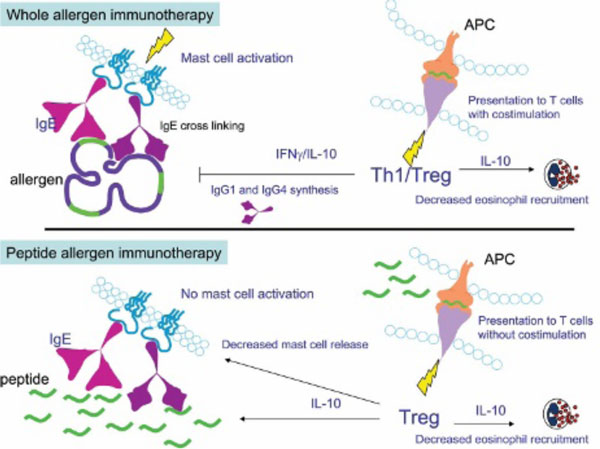Figure 1.
Comparison of whole-allergen immunotherapy and peptide immunotherapy. Whole-allergen immunotherapy leads to the generation of both T helper 1 (Th1) and T regulatory (Treg) responses. Interleukin-10 (IL-10) and interferon-γ (IFN-γ) produced by T cells of treated individuals reduce eosinophil recruitment. IL-10, IFN-γ, and IL-4 drive production of allergen-specific immunoglobulin (Ig)G antibodies. Peptides are presented to T cells with costimulation leading to a mixed Th1-Treg response. Whole-allergen molecules can cross-link allergen-specific IgE on the surface of mast cells and basophils, leading to cellular activation and IgE-mediated adverse events. APC = antigen-presenting cell. In peptide immunotherapy, short peptides do not cross-link allergen-specific IgE molecules and thus mast cells and basophils are not activated. Peptides are recognized by T cells in the absence of costimulation, resulting in a predominantly regulatory response characterized by IL-10, which decreases eosinophil recruitment and mast cell activation.

